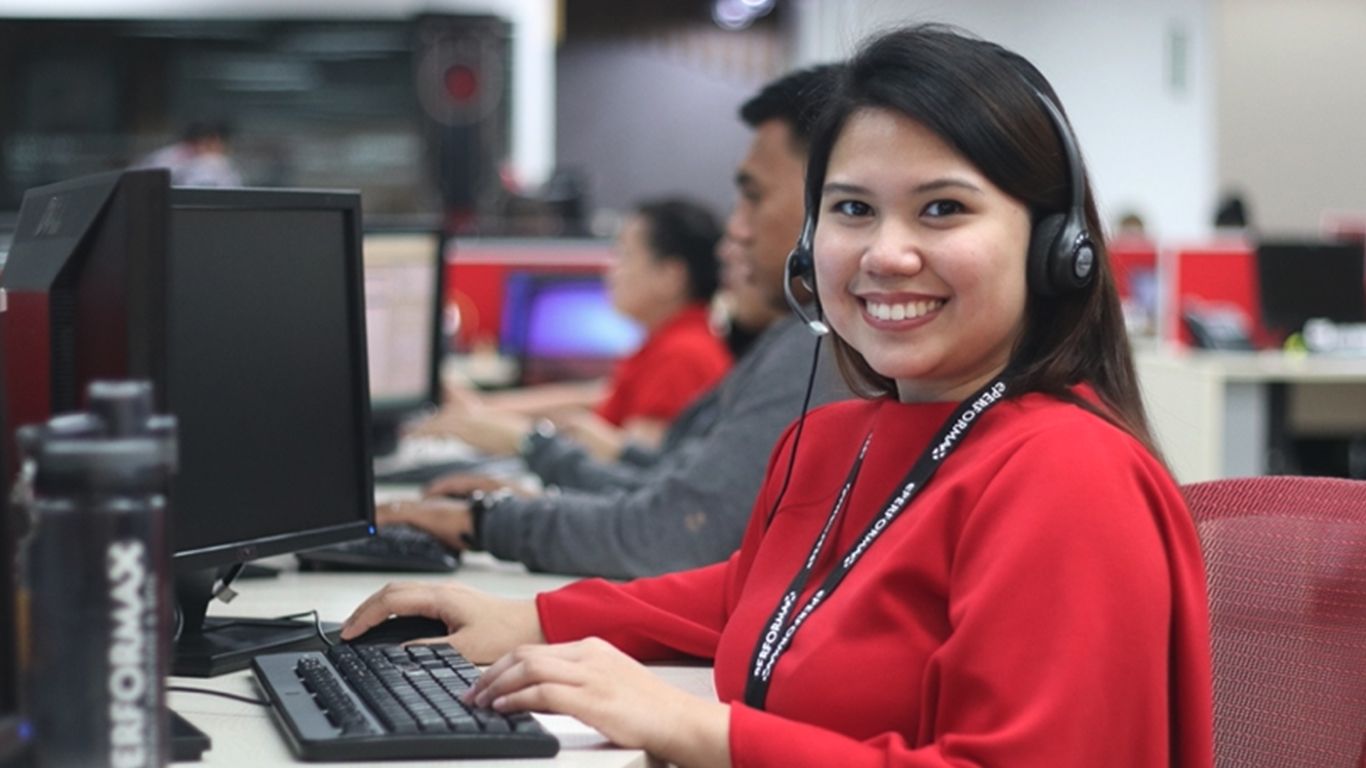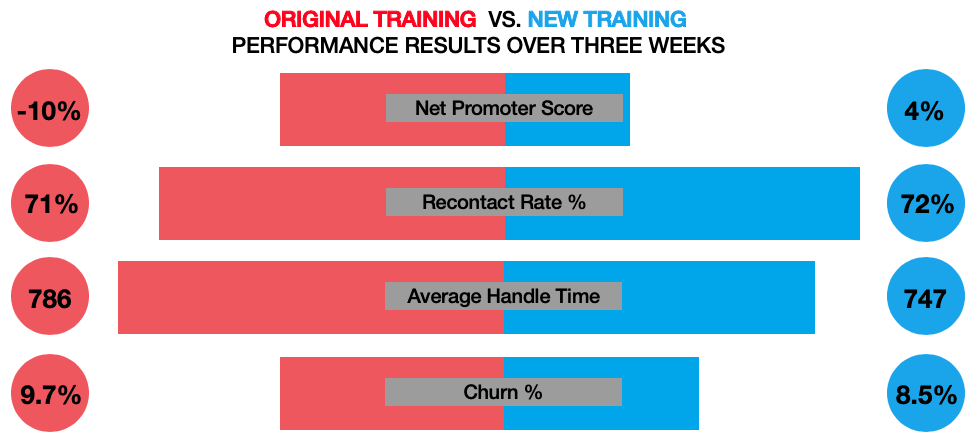
CASE STUDY | Tailoring Client’s Training to Filipino Culture Drives Positive Results
At ePerformax we use our proprietary Performance Maximization (PMax) Model, an integrated quality management system, to identify, capture, and record business intelligence and use it to develop actionable data that leads to systemic changes in recruiting, training, job aids, processes, and procedures, etc. We use a variety of COPC and Six Sigma analytical techniques to identify the root-cause/s and prioritize solutions that will have the most significant impact on overall performance.
In order to validate our recommendations, we feed our actionable insights into controlled pilots with our clients that enable us to collect benchmarking data before final recommendations are adopted.
A Telco client was seeing that new hire performance (0-30) days were dragging down enterprise NPS, RCR, AHT, and Churn across all partners. The existing classroom training was focused on product and developing skills to research the client’s system tools. This left only four hours out of four weeks of training for soft skills to help agents learn how to explain what they learned in researching an issue. For example, they could tell a customer what line item made their bill high in a month, but they weren’t being trained to uncover and explain what actually caused it.
The Opportunities ePerformax Uncovered:
- We began by using our PMax approach to identify specific call scenarios where new hires struggled. What we found was the call drivers that were used in training were different than the ones agents actually received in production. We uncovered the opportunity to make the training more comprehensive to include pricing plan inquiries, an explanation of the bill, how adjustments and credits work, along with the features and benefits of key services offered by the client.
- We then used the PMax Model to benchmark knowledge, skill, and behavioral gaps compared to successful US counterparts, especially those behaviors that are unique to Filipinos versus Americans. What we learned was:
- Reps were lacking empathy because some of the customers’ situations were unrelatable to them. For example, not having a phone, the bill being too high (often someone else is paying the rep’s bill), or even being between jobs.
- Reps didn’t understand the benefits of certain offers such as a phone protection plan. This is not a common offer from wireless companies in the Philippines.
- Reps had a hard time saying, “No, I can’t give you a credit, because it’s a valid charge on your bill.”
How We Improved the Training:
- We identified ten specific areas of opportunity to enhance existing training material, mainly focusing on top contact drivers and behavior. This included increasing the amount of training time for more challenging topics and including more call samples to show the trainees how they could be successful in handling them.
- We partnered directly with the client training development team in the United States to revamp the delivery methodology to be more real-world, scenario-based versus self-paced. This was particularly useful for material that agents were not inherently familiar with – how the client’s network was set up and worked, for example, was an area where agents preferred a person explaining it vs. a self-paced module. We also worked with them to change the length of some of the training modules to add time to ones that needed more for agents to master the knowledge and skills.
- We guided the client training development team through the unique cultural behaviors to assist in the enhancement of the product-specific material in the training, including adding in the necessary soft skills. For example, how to explain a bill thoroughly, highlight specific parts, point out changes from prior bills making it higher, as well as, understand and relay any one-time charges. This also included making some modifications to things like explaining a leasing program because in the Philippines there’s not a comparable service for mobile devices, so we came up with the comparison of renting an apartment.

The Results:
- Using ePerformax as the pilot center, we were able to conduct side-by-side pilots in controlled settings to establish baseline performance and post-pilot comparisons.
- During the pilot, we were proactive in providing training feedback in our daily and weekly meetings with the client. Our trainers also provided feedback directly to the training.
The revised new hire curriculum was rolled out enterprise-wide
or the client’s more than 18 vendor partners.

This case study is only one of many examples where ePerformax has been the partner of choice of our clients. It is these types of relationships that excite us and motivate us to continue innovating for our customers, clients, and employees.
Let ePerformax share with you how we partner and collaborate with our clients and make your business needs our top priority.
Contact us today: +1 (888) 384-7004
0 responses to “CASE STUDY | Tailoring Client’s Training to Filipino Culture Drives Positive Results”
